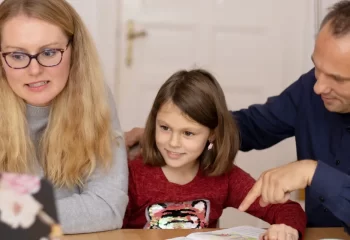Innovation in the classroom can mean many things, but mainly the capacity and willingness to have an innovative classroom goes to the teachers. The more flexible teachers are to let go of the traditional methods and embrace the new ones, the more creative a classroom can be.
Innovative Learning Environments
A learning environment mixes social, pedagogical, and physical elements. A positive environment for students and teachers develops when the three align and work together.
The innovative learning environments have existed for a long time but have not been precisely spelled out. More than this, some parents still have trouble understanding that a creative learning environment has the same educational role as a traditional one, and the results can even be better.
Today’s learning needs an appropriate approach to get students out of their seats.
How to create an innovative learning environment
Creating an innovative learning environment needs flexibility from both the students and the teachers. It does not necessarily mean spending money on furniture and teachers’ training. It has a lot to do with teachers’ availability to adapt and students’ imagination to create flexible spaces to learn.
These spaces are often created differently for each course as the needs and the teaching styles differ.
There is no fixed way to create an innovative learning space. This is why it is called innovative. As a teacher, you can be as creative as possible, offer as much flexibility to the class you think is needed, adapt to the student’s needs, and make the lesson as engaging as possible.
Examples of innovative learning environments
Innovative learning environments are those places that respect teh view of students and their needs more than the curriculum.
The shift towards innovation, creativity, and flexibility should also exist in the education environment where children are formed. Allowing them to directly participate in their learning path, construct it, make decisions and contribute to innovating the education system will increase their engagement.
Some examples of these learning systems are:
– Innovative learning mechanisms using technology
– Flexible seating in the classroom
– Flipped classroom
– Offer challenges to students to solve
– Virtual classes
Innovative vs. traditional learning environment
The innovative learning environment suits all students’ needs, while conventional learning is mainly dedicated to learners with good audio and visual focus.
Some of the differences between innovative and traditional learning environments are:
| Innovative | Traditional |
| Allows students to ask open questions | Follows the curriculum accordingly |
| Goes off the timetable | Happens during the class time |
| Has a flexible seating design | Respects the traditional design where students face the teacher |
| Creates place-based learning experiences off from the school class | Takes place in the school |
| Focuses a lot on practicality and less on theory | Focuses on theory |
Characteristics of an Innovative Classroom
An innovative classroom promotes collaboration, curiosity, comfort regarding seating, flexibility on discussions topic, positivity, technology in the classroom, and an outdoor or indoor teaching environment.
Reflection
This characteristic help the innovative learning environment develop. It is focused on always asking “what if” and being able to push the boundaries. It is a great way to evolve, learn new things, and discover and create.
Creativity
Creativity is at the base of an innovative learning environment. Finding creative solutions to what you need, creative answers to the questions and creative ways to deal with challenges helps students develop.
Some of these creative ways to have at disposal can be tablets, walls, or windows, where students can write and express themselves. Providing different learning methods to children means allowing them to choose and feel like their opinion regarding their learning path is listened to.
Connection
For an innovative learning environment to work, the teacher should be connected to everything happening in the industry, the new technologies used in the classroom, and the new recommendations for the teaching program.
Principles and routines
Innovative classrooms imply a lot of flexibility. This does not mean that it should not be based on some principles and rules to be able to function correctly. Having a set of values that guide students can help the day run smoother.
Goal setting
Setting boundaries for yourself can help a classroom be successful. Moving forward mainly depends on your will as a teacher to develop new innovative ideas to put into practice, set goals to tick, and create a classroom environment where students follow your path.
Innovative Classroom Strategies
Technology
Technology is the means students opt to find information in a few minutes. It can help them understand the lesson better when they have difficulty understanding it. More than this, allowing students to use technology helps them know what a good use of it is and what is a bad use.
Self-Directed Learning
This learning type is a beautiful way to engage students in topics of their interests. Teachers implemented this strategy by giving students various topics to choose from and research. There is also the possibility of allowing students to choose anything they want. Apart from extra confidence from teachers, students need to have a high level of maturity.
In the beginning, teachers can choose to do this in their classroom by offering 20 minutes of the classroom hour to do and work on what they want. The only rule is to be learning involved. Many students find sharing what they do extra more interesting than the usual classroom topic.
Place-based Learning
Starting learning early is important as it will help you during your high school years. Play-based refers to understanding concepts such as alphabets, numbers, reading, and writing. While it is not recommended to overwhelm children with this, opening their minds to get to know these will have only benefits.
Student-Led Discussions
When the teacher is flexible and allows the class to take another turn rather than what was previously decided, students can actively participate in the classroom. This means that the subject may take another turn as students ask questions and interfere whenever they feel another view of the topic.
The Benefits of Innovating your Classroom
Increase Engagement
When students are allowed to participate in the classroom, to shift the topic of discussion toward their interests and what they would like to understand better, it is then when they are genuinely engaged in the classroom.
And when genuine engagement occurs, authentic learning occurs as well.
Foster Collaboration
An innovative classroom helps develop the collaboration between students through how the seating is placed, the flexible discussions that take place, the teacher’s open questions, and the freedom students feel inside the classroom.
Inspire Creativity
The freedom that innovative classroom environments give students helps them be more creative. They are free to use their learning space however they want, learn and take notes wherever they want, choose how to sit, and find ways to communicate.
Innovative Classrooms FAQ
What is creativity in education?
Creativity in education means freedom.
Offering freedom to students to think and ask questions, see the class from their perspective, search for answers and share their inputs helps them develop their creativity.
Why is innovation important in the classroom?
Innovation’s importance in a classroom has much to do with teachers’ flexibility.
The more flexible they are, the more innovative can students be. The innovation inside a classroom helps students develop their self-confidence, make decisions and responsibility skills, become more creative, have a higher degree of collaboration, and improve their wellbeing.
What does innovation look like in the classroom?
Innovation in a classroom does not mean the lack of rules, it means the acceptance that children are different and the adaptability to each of their needs. Innovation is essential when you want to raise engagement. It is an excellent opportunity to collaborate with students by showing them you have confidence in their opinions.
What are modern learning environments?
Modern learning environments are those classrooms that allow students to participate in the learning process to redirect the discussion according to their interests. The learning environment offers them a flexible space where they can sit in a group or choose any way to stand in a classroom that helps them focus better.




